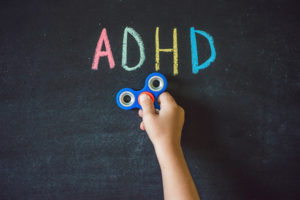Attention Deficit Disorder (ADD)/Attention Deficit Hyperactivity Disorder (ADHD): A brain disorder that can cause both learning and behavioral difficulties in children, adolescents, and adults. Although these terms are often used interchangeably, there are differences between them that many are unaware of. Understanding these differences can help you or a loved one get an accurate diagnosis from a healthcare professional.
Attention Deficit Hyperactivity Disorder (ADHD) involves a combination of hyperactivity and impairments to impulse control and attention.
The three types of ADHD are:
- Inattentive ADHD (or ADD): Symptoms include poor focus, forgetfulness, and disorganization, but not hyperactivity. Since this type of ADHD does not involve hyperactivity, it is also known as attention deficit disorder or ADD. Those with ADD may regularly forget about daily chores, tasks, and activities, in addition to being disorganized. They may also may frequently and easily get distracted, not follow directions, not listen, and have problems paying attention and maintaining attention. There is a large list of symptoms, so it’s important to learn all you can about inattentive ADHD if you or a loved one is exhibiting these symptoms (Johnson, 2017).
- Hyperactive-impulsive ADHD: Restlessness and poor impulse control, but not inattention, are what define this type of ADHD. There are many core symptoms of hyperactive-impulsive ADHD that can signal the presence of the condition. Some of these symptoms of ADHD include troubles with staying still, such as frequently squirming and fidgeting with objects. Moreover, people with this type of ADHD will often get out of their seat in settings where it is inappropriate, such as in the classroom or in work meetings. There is also often a feeling of restlessness, excessive talking, and frequent interruption of others. While these symptoms define hyperactive-impulsive ADHD, inattention is not one of them (Johnson, 2017).

- Combined ADHD: A combination of impulsive behavior, hyperactivity, and inattention are the defining traits of this type of ADHD. Combined ADHD includes core symptoms of both ADD and hyperactive-impulsive ADHD.
It is important to know that ADD and ADHD do not just affect children and adolescents. Adults have these conditions too, so their symptoms should not be ignored. It can place great burdens on productivity and functioning abilities at work, and yet many adults may not realize they have these impairments. Staying informed on these conditions can go a long way in improving quality of life in those who would otherwise shrug off these symptoms and attribute it to something else.
Interested in learning more about ADD/ADHD research? Please call 561-296-3820. The Premiere Research Institute in West Palm Beach regularly conducts clinical research studies in the field of ADD/ADHD. To find out more about these studies click here or sign up for their newsletter to keep informed about the newest treatments, articles, and research that are being conducted in the field of ADD/ADHD.
References:
Attention-deficit / hyperactivity disorder (ADHD): Other concerns and conditions. (2016, October 5). Retrieved from https://www.cdc.gov/ncbddd/adhd/conditions.html
Johnson, J. (2017, January 12). “ADD vs. ADHD: Is There a Difference?” Medical News Today. Retrieved from https://www.medicalnewstoday.com/articles/315158.php.
